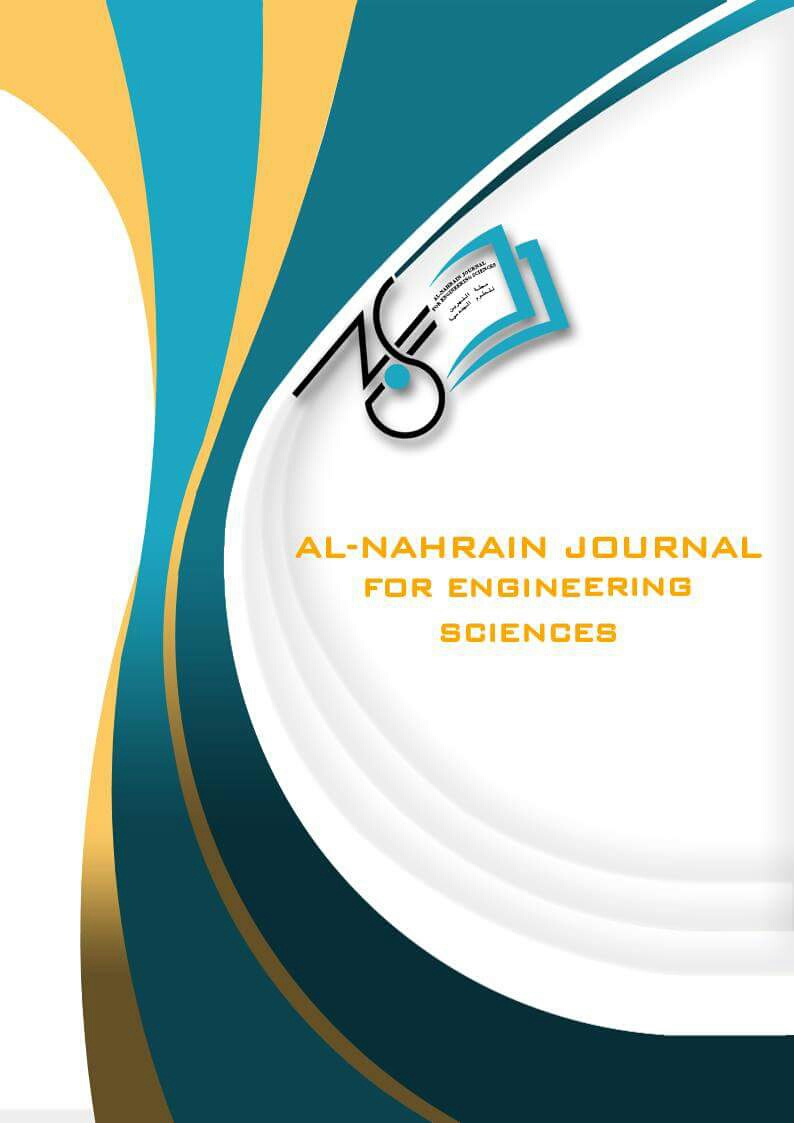Pavement Binder Course Optimization
DOI:
https://doi.org/10.29194/NJES.26040304Keywords:
Pavement Thickness, Crumb Rubber, Dry Method, PCASE, MR, Marshall testAbstract
The main objective of this study is to design the asphalt pavement structure for the Alkut-Mayssan highway in Iraq as a case study by using PCASE application to determine the necessary thickness of CR-modified asphaltic layers. Additionally, Marshall tests were used to investigate the effect of the dry process crumb rubber modifier on the thickness of the binder coarse layer based on various variables, such as the crumb rubber modifier with different content (1, 2, 3, 4, 5)% and sizes (0.3mm, 2.36mm , 4.75mm, and mix gradation). The test results show that while pavement thickness reduced as crumb rubber gradation increases, MR values increase. Additionally, as compared to the control mixture, the addition of 1% of CR in various gradations could decrease the thickness of the asphalt binder layer.
Downloads
References
R. Mallick and T. El-Korchi, “Pavement Engineering: Principles and Practice”, CRC Press, New York, NY, USA, 2013.
Leiva, P., Loría, L.G., and Navas, A., “Comparison between modeling of flexible pavement responses with elastic multilayer and finite element analysis, XVI CILA Congreso Ibero-Latinamericano del Asfalto, Rio Janeiro, Brazil, 2011.
American Association of state Highway Transportation Officials – AASHTO-93. Guide for design of pavement Structures. Washington D.C., USA, 1993.
Shafabakhsh, G., Naderpour, H., & Noroozi, R., “Determining the relative importance of parameters affecting concrete pavement thickness”, 2015.
Wilches, F. J., Burbano, J. L. A., & Pabón, F. A. G, “Implementation of a Design Procedure for the Project of a Flexible Pavement in a Military Installation. elastic, 8, 9”, 2020.
Congress, I. R., “Guidelines for the design of flexible pavements. Indian code of practice”, IRC, 37, 2001.
SCRB (State Commission of Roads and Bridges),“Hot Mix Asphalt Concrete Pavements Section R9”, Revision of Standard Specifications for Roads and Bridges, Ministry of Housing and Construction, Department of Planning and Studies, 2003.
ASTM D-1559, "Resistance to Plastic Flow of Bituminous Mixtures Using Marshall Apparatus", American Society of Testing and Materials, 2002.
Mary Adolf, P.E., Andrew Harrison, Carlos Gonzalez, P.E., Patrick McCaffrey, Robert Walker, Haley Bell, John Lott, “User Manual of PCASE 2.09” US Army Corps of Engineers, Transportation Systems Center & Engineering Research and Development Center, 2010.
Hassan N., Almusawi A., Mahmud M., Abdullah N., Shukry N., N. Mashros, Jaya R., Yusoff N., “Engineering properties of crumb rubber modified dense graded asphalt mixtures using dry process”, IOP Conf. Series: Earth and Environmental Science, 2019. doi:10.1088/1755-1315/220/1/012009.
Ghofran A., Hasan M., “Performance Evaluation Of Sustainable Warm Mix Asphalt Moisture Under Repeated Loading” Journal Of Aeronatical Matirals, 2023.
Sajjad H., H. Al-Mosawi., “Optimizing Pavement Layers Cost Using Sustainable Pavement Materials”. 2023.
Downloads
Published
Issue
Section
License
Copyright (c) 2024 Abrar Alazawi, Hassan Musa Al-Mousawi

This work is licensed under a Creative Commons Attribution-NonCommercial 4.0 International License.
The authors retain the copyright of their manuscript by submitting the work to this journal, and all open access articles are distributed under the terms of the Creative Commons Attribution-NonCommercial 4.0 International (CC-BY-NC 4.0), which permits use for any non-commercial purpose, distribution, and reproduction in any medium, provided that the original work is properly cited.














